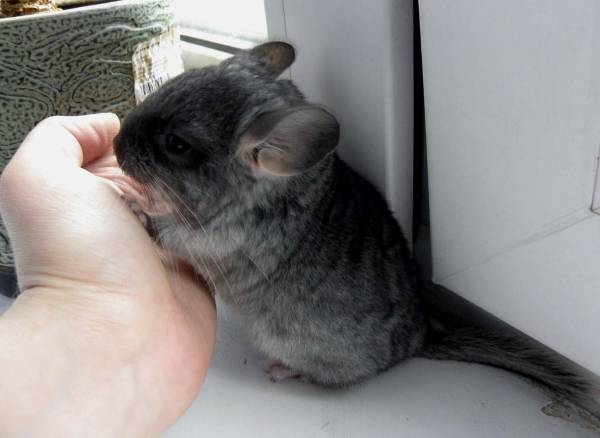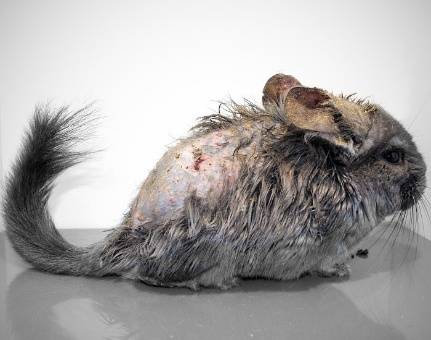Content
People have one interesting feature: we all perceive a furry animal as a completely harmless, cute creature. And we constantly find ourselves in unpleasant situations. The same thing happens with chinchillas. A cute furry creature, just purchased from a breeder, suddenly screams, shoots urine and even bites. But the man just wanted to pet his new friend. How to accustom a chinchilla to your hands?
Not a single video on the Internet shows a scene of a chinchilla attack. And breeders assure that these animals do not bite. Why does a newly acquired animal attack? He's just defending himself.
Chinchillas are very sensitive to changes in place of residence and owner. This is always very stressful for them. An unfamiliar place, perhaps a hostile environment, and then someone else is approaching with unknown goals.
Trying to scare a potential predator, the unfortunate animal first screams and shoots streams of urine with precision. If this does not help, the rodent rushes into the last battle, trying to sell its life at a higher price. It takes a lot of time to accustom chinchillas to being handled.
Do chinchillas bite in their usual environment?
When communicating with any animals, trying to tame them, you must always remember the rule: it has teeth, which means it bites.Animals always balance their capabilities with the forces of a potential enemy. If possible, a chinchilla will not fight with a person, since people are much larger.
But in relation to their relatives, these animals are often very bloodthirsty. Since female chinchillas are larger, the males usually get the food. Breeders admit that sometimes they wake up in the morning to find only the female and bloody pieces of the male in the cage. So we can say with complete confidence: if desired, these rodents bite. And very strongly.
But an animal that feels safe has no reason to be aggressive. In a familiar environment, the animal really does not bite people, preferring to take out its irritation not on a person, but on its relatives.
What to do to avoid bites
In order not to get hurt when trying to tame a chinchilla, and not to be disappointed in its friendliness, you must follow several important rules.
- When buying a new animal, you should not immediately try to pet the chinchilla and pick it up. It takes a rodent at least a week to get comfortable and feel safe in a new home. It is best not to pester the animal at all for 10-14 days.Important! You should not try to catch and forcefully hold a chinchilla.
- After the animal gets used to it and stops panicking, you can begin to slowly accustom your pet to handling. No violence should be used. The main factor in taming chinchillas is patience. The animal is lured with treats. No one can say how long it will take to domesticate an animal. It depends on the nature of the individual. Some remain wild. If an adult chinchilla was purchased, there is a chance that it will never get used to its new owner.Comment! The younger the purchased individual, the easier it is to tame it.
- When the animal comes to the person when the door opens, they begin to teach it to come into the hand. Here, too, it is important to take your time and gradually encourage the rodent to move further and further.
- After the pet begins to calmly eat the treat while sitting on your hand, you can begin stroking the animal. Sensitive places for a chinchilla are the neck, chest and area behind the ear.Important! You should not stroke these animals’ backs, sides, bellies, and especially their tails.
You can always tell from a rodent whether it likes affection. If a chinchilla does not want to be scratched, she becomes indignant and pushes the hand away. There are individuals who do not like to be touched at all. But even if you don’t scratch your pet, you still need to train him to touch your hand. It is necessary to be able to take the animal for examination or veterinary procedures. You can also train the animal to “walk” around the house, sitting on the owner’s shoulder.
How to train a chinchilla
Chinchillas cannot be trained. They can only develop conditioned reflexes using their love for treats. But on the Internet there are videos of chinchillas performing simple tricks. Training is based on food reward.
This is how you can train a rodent
- "kiss";
- to answer the call;
- sit in the gopher pose;
- give paw
Approach to nickname
Each time you feed or give a treat, you need to call the chinchilla by name. The animal develops a conditioned reflex: heard the name - came up - got a tasty piece.
"Kiss"
To accustom your pet to this trick, you will have to catch the animal when it reaches out to its cheek or lips out of curiosity.First, you will have to give the required command after the animal has performed the action and immediately hand over the treat. Slowly you need to get the rodent to “kiss” after the given command. After the trick, the animal must be given a reward.
"Give me your paw"
Accustoming to this command is similar to how an animal is taught to “kiss.” After waiting for the moment when the animal, for some reason, stretches out its paw and touches its palm, they say: “Give me your paw!” – and they immediately feed him a treat. Gradually, the rodent forms a connection: command - touch your palm with its paw - get a tasty piece.
Gopher pose
One of the simplest tricks. The chinchilla is forced to reach up for a piece and the treat is given back as soon as it sits on its hind legs.
What is important to consider when training
Chinchillas should not be overfed, so the amount of treats during training should not exceed the daily limit. In other words, when training a chinchilla, it is not given additional treats. Those feedings that the animal should have received as a daily norm, it receives during the training process. And the tidbits should be very small.
It is also impossible to psychologically overload the animal with long exercises. It is better to train your pet twice a day for 5 minutes than once for 10 minutes.
Conclusion
Among rodents, chinchillas are long-lived. If the owner is able to establish mutual understanding with this animal, he will find a good friend for many years.















